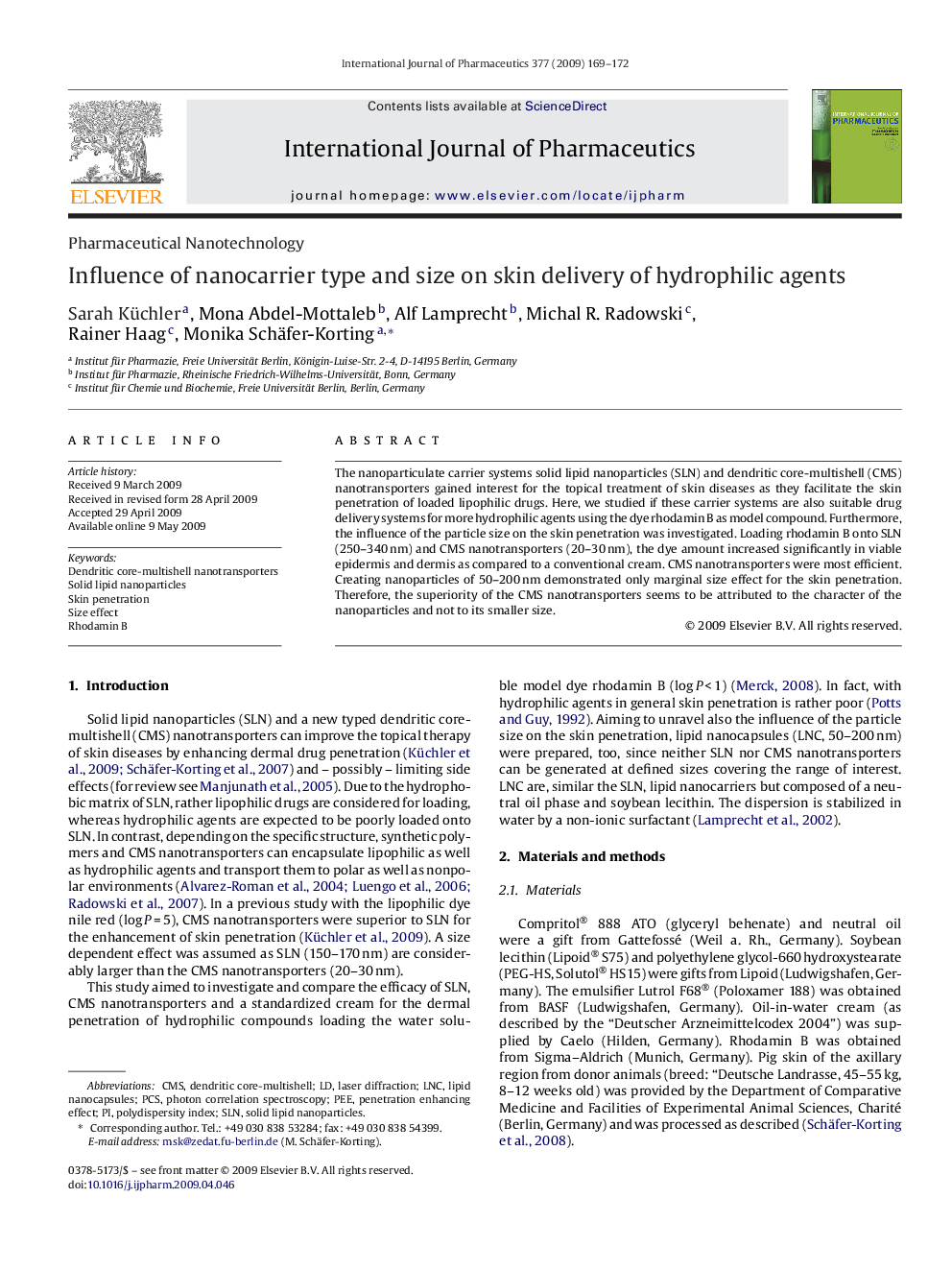| Article ID | Journal | Published Year | Pages | File Type |
|---|---|---|---|---|
| 2504797 | International Journal of Pharmaceutics | 2009 | 4 Pages |
The nanoparticulate carrier systems solid lipid nanoparticles (SLN) and dendritic core-multishell (CMS) nanotransporters gained interest for the topical treatment of skin diseases as they facilitate the skin penetration of loaded lipophilic drugs. Here, we studied if these carrier systems are also suitable drug delivery systems for more hydrophilic agents using the dye rhodamin B as model compound. Furthermore, the influence of the particle size on the skin penetration was investigated. Loading rhodamin B onto SLN (250–340 nm) and CMS nanotransporters (20–30 nm), the dye amount increased significantly in viable epidermis and dermis as compared to a conventional cream. CMS nanotransporters were most efficient. Creating nanoparticles of 50–200 nm demonstrated only marginal size effect for the skin penetration. Therefore, the superiority of the CMS nanotransporters seems to be attributed to the character of the nanoparticles and not to its smaller size.
